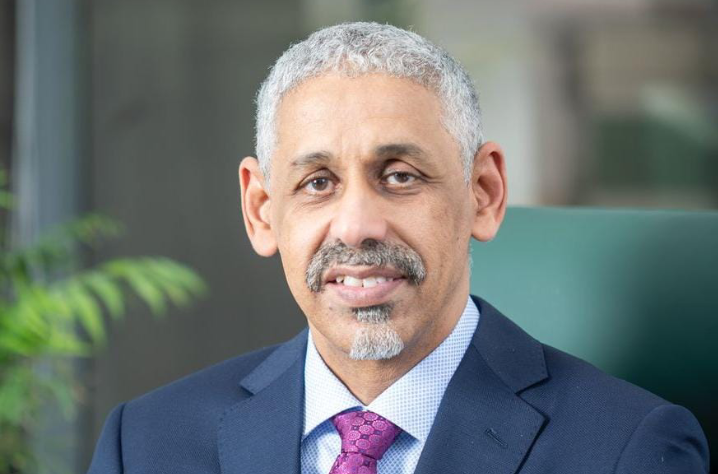
The Sidi Tah Doctrine: A Presidential Mandate for Africa’s Next Chapter
By Chinedu Moghalu
The election of Dr. Sidi Ould Tah as the 9th President of the African Development Bank (AfDB) at the 2025 Annual General Meeting in Abidjan marks more than a leadership change—it signals a turning point. Backed by a commanding 73% of Regional Member Countries (RMCs) and 77% overall, his dual endorsement is unprecedented in the Bank’s history. To those who have long observed the AfDB’s drift between caution and ambition, this moment demands not just new leadership, but a catalytic doctrine.
Dr. Tah, who officially assumes office in September, brings not a manifesto but a method—shaped by a decade of transformative leadership at the Arab Bank for Economic Development in Africa (BADEA). There, annual approvals grew twelvefold, disbursements eightfold, and the institution emerged as a formidable force in infrastructure, SME finance, digital platforms, and fragile-state support. Under his watch, BADEA’s capital base expanded by 376%, and just weeks before his AfDB election, S&P upgraded its long-term credit rating to AA+. That track record is not a promise—it’s proof.
From this legacy arises The Tah Doctrine, a five-pillar framework: Execution, Scale, Innovation, Inclusion, and Institutional Fitness. It’s not ideology—it’s engineering. It asserts that Africa’s future hinges on institutions that are fast, flexible, and fit for purpose in a volatile global landscape.
This doctrine meets the moment. Global financing is tightening. Aid is shrinking. Trade now hinges on ESG compliance and climate standards. Meanwhile, Africa’s population is booming. Cities are growing. Demands for infrastructure, energy, and food are mounting. The AfDB must become more than a lender—it must be a broker of capital, coherence, and continental ambition.
It begins with scale. The Bank’s current annual lending of about $10 billion is dwarfed by the continent’s $100+ billion financing gap. The Tah Doctrine sees scale as non-negotiable—pursuing general capital increases, callable capital reforms, and blended finance models that crowd in private capital. Expect a revitalized Africa Investment Forum (AIF)—not as a showcase, but as a syndication hub for long-term investors.
Yet scale alone means little without execution. Dr. Tah’s leadership at BADEA demonstrated a delivery culture: infrastructure beyond feasibility studies; education beyond enrollment stats; agriculture from seed to scale. His presidency promises a clear line from funds approved to futures changed. Delivery becomes systematized—not episodic.
On innovation, the doctrine is bold yet grounded. Dr. Tah championed AI-enabled agri-tech, programmable Islamic finance, and digital SME ecosystems at BADEA. At AfDB, expect programmable trade finance, interoperable regional payments, smart export insurance, and ESG-ready digital infrastructure. Innovation here is not a buzzword—but a developmental necessity.
Where past doctrines, like the Washington Consensus, emphasized liberalization and fiscal restraint, The Tah Doctrine charts a complementary path: toward catalytic institutions, capable states, deeper market coordination, and unapologetic African agency. It tailors tools to African realities. Infrastructure becomes continuity. Delivery becomes institutionalized. Credibility lies in sustainability—not slogans.
At its heart, this is an African doctrine—not imported, but born from the ethic of Ubuntu: I am because we are. Development, in this view, is co-created, collective, and grounded in dignity and ambition. The doctrine channels that ethos into institutional form, building the scaffolding—legal, financial, and strategic—for African aspirations to materialize.
Expect a reimagined Africa Investment Forum operating year-round to curate projects, syndicate deals, and accelerate closures. Also likely is the launch of an Export Transition Facility to help African firms adapt to emerging trade and ESG standards—responding not to future threats, but today’s realities.
Regional integration under the Tah Doctrine is pragmatic. It links AfDB financing directly to the African Continental Free Trade Area (AfCFTA)—delivering corridors, harmonizing standards, financing ports, and unlocking value chains. No rhetoric. Just results.
Inclusion is another cornerstone. Africa’s youth and women are not side notes—they are central to economic transformation. At BADEA, Dr. Tah launched youth leadership programs, green entrepreneurship platforms, and financing for women-led businesses in fragile contexts. At AfDB, expect gender-intentional capital, youth-driven financing vehicles, and strategic support for sectors like agribusiness, fintech, and light manufacturing. This is inclusion by design, not default.
Still, doctrines—however elegant—must contend with institutional inertia. The AfDB is mature. It won’t pivot on charisma. But Dr. Tah is not a disruptor. He is a disciplined, methodical reformer. This is not a vision about one man—it is a blueprint for institutions that outlast individuals and strategies that transcend political cycles. He is not coming to shake the foundations. He is coming to strengthen them.
And that is the quiet power of The Tah Doctrine: it doesn’t promise rupture—it promises renewal.
Skeptics will, no doubt, emerge. But performance is the ultimate rebuttal. BADEA was not transformed by speeches, but by sustained delivery. That legacy now accompanies Dr. Tah to AfDB.
This doctrine is not a challenge to the world. It is a message to Africa—and a proposition to partners: that when backed by vision, discipline, and delivery, credible African institutions can drive enduring transformation.
Africa’s future must no longer be delayed by bureaucracy, denied by capital, or defined by outsiders. It must be delivered—by Africans, with global partnership, through institutions that work.
This is not sentiment.
It is strategy.
Not just hope.
But architecture—deliberate, evolving, and accountable.
Doctrines are not judged by what they promise.
They are judged by what they build.
Chinedu Moghalu is a strategic communications expert, lawyer, and public policy adviser. He holds degrees in political science, communication for development, and law, with executive training from Harvard Kennedy School and the University of Maryland.
